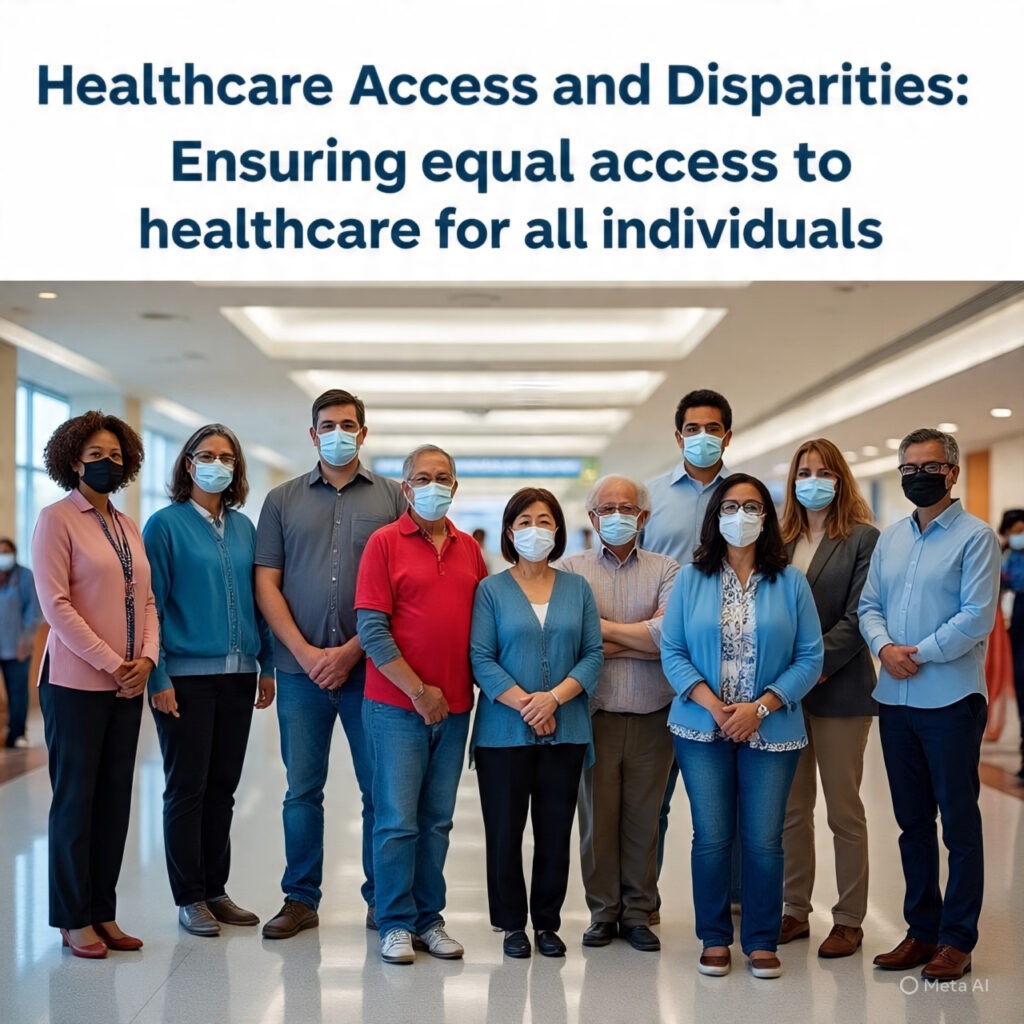
Ensuring Equal Access to Healthcare: Addressing Disparities and Promoting Equity
Healthcare access is a fundamental human right, essential for maintaining good health, preventing illness, and managing chronic conditions. However, healthcare disparities persist, affecting vulnerable populations and perpetuating health inequities. In this article, we will explore the issues surrounding healthcare access and disparities, and discuss strategies for promoting equal access to healthcare for all individuals.
Understanding Healthcare Disparities
Healthcare disparities refer to differences in healthcare access, quality, and outcomes that are closely linked to social, economic, and environmental factors. These disparities can affect various populations, including:
- Racial and Ethnic Minorities: These groups often face barriers to healthcare access, including cultural and linguistic barriers, socioeconomic constraints, and systemic racism.
- Low-Income Communities: Individuals living in poverty or with limited financial resources may struggle to access healthcare services, including preventive care, chronic disease management, and mental health services.
- Rural Communities: Residents of rural areas often face challenges accessing healthcare services due to geographic isolation, limited provider availability, and lack of transportation options.
- LGBTQ+ Communities: These individuals may experience discrimination, stigma, and limited access to healthcare services that cater to their specific needs.
Barriers to Healthcare Access
Several barriers contribute to healthcare disparities, including:
- Lack of Health Insurance: Without insurance, individuals may struggle to access healthcare services, including preventive care, chronic disease management, and mental health services.
- Cultural and Linguistic Barriers: Healthcare providers may not speak the same language as patients, or cultural differences may affect communication and care.
- Geographic Barriers: Rural areas often have limited healthcare providers, making it difficult for residents to access care.
- Socioeconomic Barriers: Poverty, lack of education, and limited job opportunities can limit access to healthcare services.
Strategies for Promoting Equal Access to Healthcare
To address healthcare disparities and promote equal access to healthcare, several strategies can be employed:
- Increase Access to Health Insurance: Expanding health insurance coverage can help reduce disparities in healthcare access.
- Cultural Competence Training: Healthcare providers can benefit from training that enhances their cultural awareness and communication skills.
- Telemedicine and Digital Health: Telemedicine and digital health technologies can improve access to healthcare services, particularly in rural areas.
- Community-Based Initiatives: Community-based initiatives, such as health fairs, outreach programs, and patient navigation services, can help connect vulnerable populations to healthcare services.
Conclusion
Healthcare disparities are a significant issue affecting vulnerable populations and perpetuating health inequities. By understanding the root causes of these disparities and implementing strategies to promote equal access to healthcare, we can work towards a more equitable healthcare system. By prioritizing healthcare access and equity, we can improve health outcomes, reduce healthcare costs, and promote overall well-being for all individuals.: Addressing Disparities and Promoting Equity
Healthcare access is a fundamental human right, essential for maintaining good health, preventing illness, and managing chronic conditions. However, healthcare disparities persist, affecting vulnerable populations and perpetuating health inequities. In this article, we will explore the issues surrounding healthcare access and disparities, and discuss strategies for promoting equal access to healthcare for all individuals.
Understanding Healthcare Disparities
Healthcare disparities refer to differences in healthcare access, quality, and outcomes that are closely linked to social, economic, and environmental factors. These disparities can affect various populations, including:
- Racial and Ethnic Minorities: These groups often face barriers to healthcare access, including cultural and linguistic barriers, socioeconomic constraints, and systemic racism.
- Low-Income Communities: Individuals living in poverty or with limited financial resources may struggle to access healthcare services, including preventive care, chronic disease management, and mental health services.
- Rural Communities: Residents of rural areas often face challenges accessing healthcare services due to geographic isolation, limited provider availability, and lack of transportation options.
- LGBTQ+ Communities: These individuals may experience discrimination, stigma, and limited access to healthcare services that cater to their specific needs.
Barriers to Healthcare Access
Several barriers contribute to healthcare disparities, including:
- Lack of Health Insurance: Without insurance, individuals may struggle to access healthcare services, including preventive care, chronic disease management, and mental health services.
- Cultural and Linguistic Barriers: Healthcare providers may not speak the same language as patients, or cultural differences may affect communication and care.
- Geographic Barriers: Rural areas often have limited healthcare providers, making it difficult for residents to access care.
- Socioeconomic Barriers: Poverty, lack of education, and limited job opportunities can limit access to healthcare services.
Strategies for Promoting Equal Access to Healthcare
To address healthcare disparities and promote equal access to healthcare, several strategies can be employed:
- Increase Access to Health Insurance: Expanding health insurance coverage can help reduce disparities in healthcare access.
- Cultural Competence Training: Healthcare providers can benefit from training that enhances their cultural awareness and communication skills.
- Telemedicine and Digital Health: Telemedicine and digital health technologies can improve access to healthcare services, particularly in rural areas.
- Community-Based Initiatives: Community-based initiatives, such as health fairs, outreach programs, and patient navigation services, can help connect vulnerable populations to healthcare services.
Conclusion
Healthcare disparities are a significant issue affecting vulnerable populations and perpetuating health inequities. By understanding the root causes of these disparities and implementing strategies to promote equal access to healthcare, we can work towards a more equitable healthcare system. By prioritizing healthcare access and equity, we can improve health outcomes, reduce healthcare costs, and promote overall well-being for all individuals.